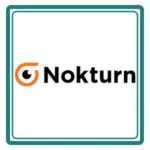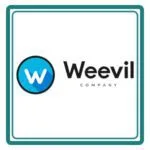CE Mark Certification in Johannesburg
Get Free Consultation
PopularCert offers professional CE Mark certification services in Johannesburg, helping manufacturers ensure their products meet essential European Union health, safety, and environmental standards. CE Mark certification in Johannesburg allows businesses in areas like Sandton, Rosebank, and Midrand to legally access and compete in the European Economic Area (EEA). We guide companies through compliance with relevant EU directives and regulations, while also supporting alignment with complementary standards such as ISO 13485 for medical devices and ISO 9001 for quality management, ensuring product credibility and market readiness.
What Is CE Mark Certification?
CE Mark Certification indicates that a product complies with European health, safety, and environmental protection standards. It is mandatory for certain products sold within the European Economic Area (EEA). The CE mark ensures free marketability in Europe and builds customer trust by demonstrating product quality, legal compliance, and adherence to EU directives and regulations.
Why is CE Marking Important for Businesses in Johannesburg?
- In Johannesburg’s growing market, CE Marking is more than just a label—it’s a passport to global trade. For businesses aiming to export to Europe, CE certification proves your product meets essential EU health, safety, and environmental standards. It removes trade barriers and reassures customers that your goods are legally compliant and safe to use.
- For manufacturers, tech firms, and even startups in Johannesburg, CE Marking builds credibility and streamlines market access. It’s especially valuable for those entering the electronics, machinery, or medical device sectors. Partnering with trusted consultants like PopularCert can simplify the process and ensure your certification journey meets both EU and local requirements, helping your brand grow confidently on the international stage.
How to Get CE Mark Certification in Johannesburg?

Process to Get CE Mark Certification in Johannesburg
Understand CE Marking Requirements
Familiarize yourself with the relevant EU directives for your product and identify the required technical specifications.
Evaluate Product Compliance
Perform a comprehensive internal review to ensure your product meets the essential requirements outlined in the applicable directives.
Prepare Technical Documentation
Compile the necessary documentation, including a technical file, risk assessments, user manuals, and test reports.
Conformity Assessment
Depending on the product, either self-certify or engage a notified body for a formal conformity assessment.
Apply the CE Mark
Once compliance is verified, affix the CE mark to the product and its packaging to indicate it meets EU safety, health, and environmental standards.
Benefits of CE Mark Certifications In Johannesburg
- Access to European Market: CE Mark certification is mandatory for selling products within the European Economic Area (EEA), expanding market opportunities.
- Compliance with EU Regulations: Ensures your product meets the health, safety, and environmental requirements set by EU legislation.
- Increased Consumer Confidence: Demonstrates to customers that the product meets high-quality standards, enhancing trust and brand reputation.
- Market Differentiation: Provides a competitive edge by showing your product complies with international standards.
- Legal Protection: Reduces the risk of legal disputes by ensuring your product meets regulatory standards.
- Improved Product Safety: Through rigorous assessments and testing, CE Mark certification helps improve the overall safety and quality of products.
Types Of ISO Certification In Johannesburg
Get Free Consultation
Our Clients


















Cost of CE Mark Certification in Johannesburg
The cost of CE Mark certification in Johannesburg depends on product type, regulatory requirements, and the assessment route chosen. Companies looking for the best CE certification company in Johannesburg or wondering about the cost of CE certification in Johannesburg should know that it varies by product complexity and the need for testing or technical documentation. PopularCert offers a free CE consultation in Johannesburg to guide businesses through a smooth and compliant certification process.
Key cost factors include:
- Product category and applicable EU directives
- Requirement for third-party conformity assessment
- Documentation and testing needs
- Certification body or Notified Body charges
- Technical file and design evaluation
- Post-certification surveillance (if needed)
Partner with reliable CE consultants to ensure compliance and market access.
Why Choose PopularCert for CE Mark Certification in Johannesburg?
PopularCert simplifies the process of obtaining CE Mark certification in Johannesburg, ensuring your products meet EU safety, health, and environmental requirements. Our experts understand the compliance landscape and offer step-by-step support tailored to your product type. We streamline the CE Mark certification process Johannesburg so you can access European markets confidently and efficiently.
- Expert guidance on CE conformity assessment
- Customized support for manufacturers and exporters
- End-to-end help with documentation and testing
- Fast-track solutions for CE mark certification Johannesburg
- Trusted by businesses across South Africa
GET A FREE CONSULTATION NOW
FAQ
What is CE Mark and why is it important in Johannesburg?
The CE Mark on a product indicates that the manufacturer, exporter or importer of that product affirms its compliance with the relevant European (EU) legislation and the product may be sold anywhere in the European Economic Area (EEA). It is important for companies in Johannesburg which aim to enter the EEA. This CE Mark signifies compliance with EU health, safety and environmental protection standards which enhances product credibility and marketability.
What are the Benefits of CE Mark certification in Johannesburg?
Obtaining a CE Mark certification for companies in Johannesburg can prove to be highly beneficial. It provides access to European markets which comprises of 30 countries, without the need for any additional certifications. It enhances credibility, provides competitive advantage, assures adherence to legal compliances and streamlines process.
Who Should Get CE Mark certification in Johannesburg?
Any manufacturer / company based in Johannesburg wishing to expand its business and market their products within the EAA must obtain CE Mark certification.
How Does CE Mark certification Work in Johannesburg?
The CE Mark certification requires conformity with EU standards for product safety. Companies must ensure compliance through testing, documentation and assessment by authorized notified bodies.
